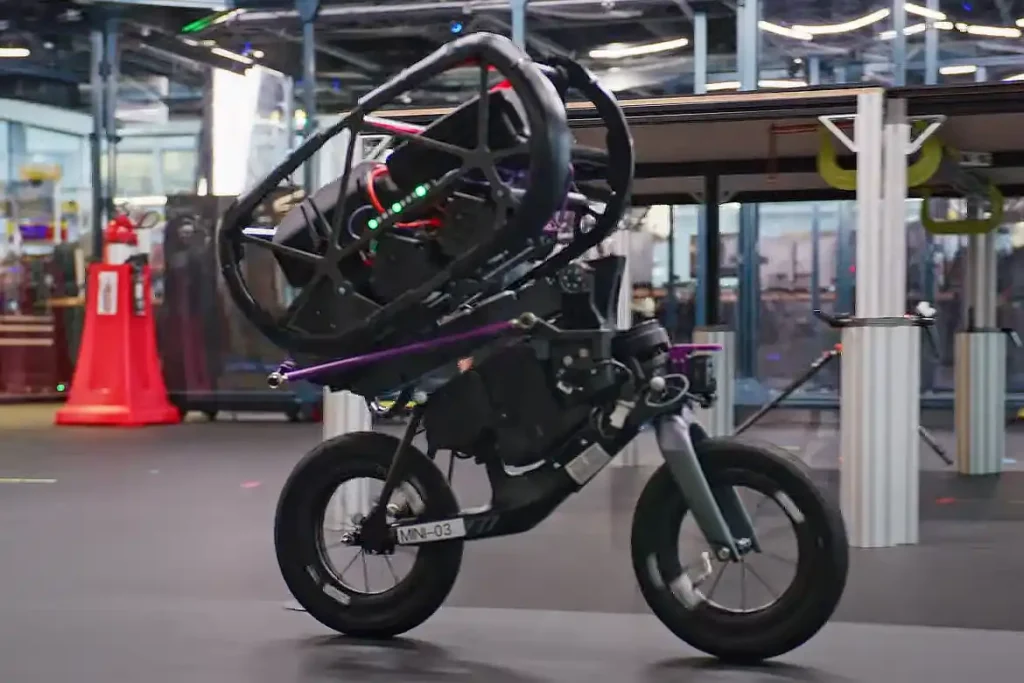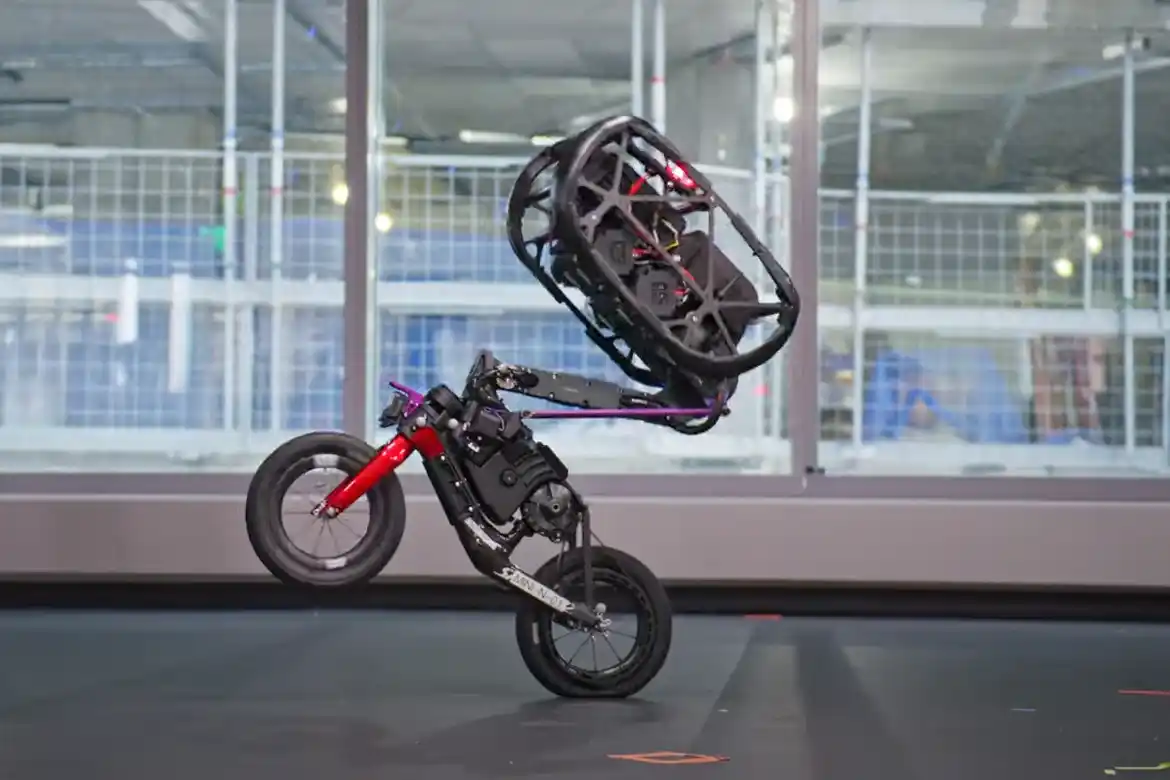The Robotics and AI Institute (RAI) has introduced an ambitious project called Wheeled Robotic Systems for Ultra Mobility and Performance (UMV). This two-wheeled robot is designed to combine the best features of bicycles and legged machines, creating a new standard for agility, balance, and efficiency.
A Robot That Learns Through Simulation
The UMV flips, hops, and balances through moves it learned in simulation rather than ones pre-programmed by human engineers. Instead, the robot learned them entirely through reinforcement learning (RL), a form of AI training that uses physics-based simulation.
By running trial and error thousands of times in a virtual environment, the robot gained the ability to perform stunts like a seasoned acrobat.

Design Inspired by Efficiency and Agility
The UMV robot uses a lightweight carbon fiber bike frame in its lower half. Two motors control steering and forward velocity. The upper half contains a four-motor mechanism designed for jumping, flips, and hops.
This unique Z-shaped structure allows the robot to change its height dramatically. When tucked in, it stands at just 80 cm tall, but it can extend to over 152 cm when performing a jump.
Lightweight Power with Advanced Mobility
The UMV weighs around 23 kg and uses custom-tuned lightweight batteries that provide both strength and endurance. This robotic system combines the efficiency of wheels with the agility of legs. It demonstrates a new approach to mobility. It can roll efficiently like a bike, then suddenly leap or flip when the terrain demands.
Source: RAI Institute

